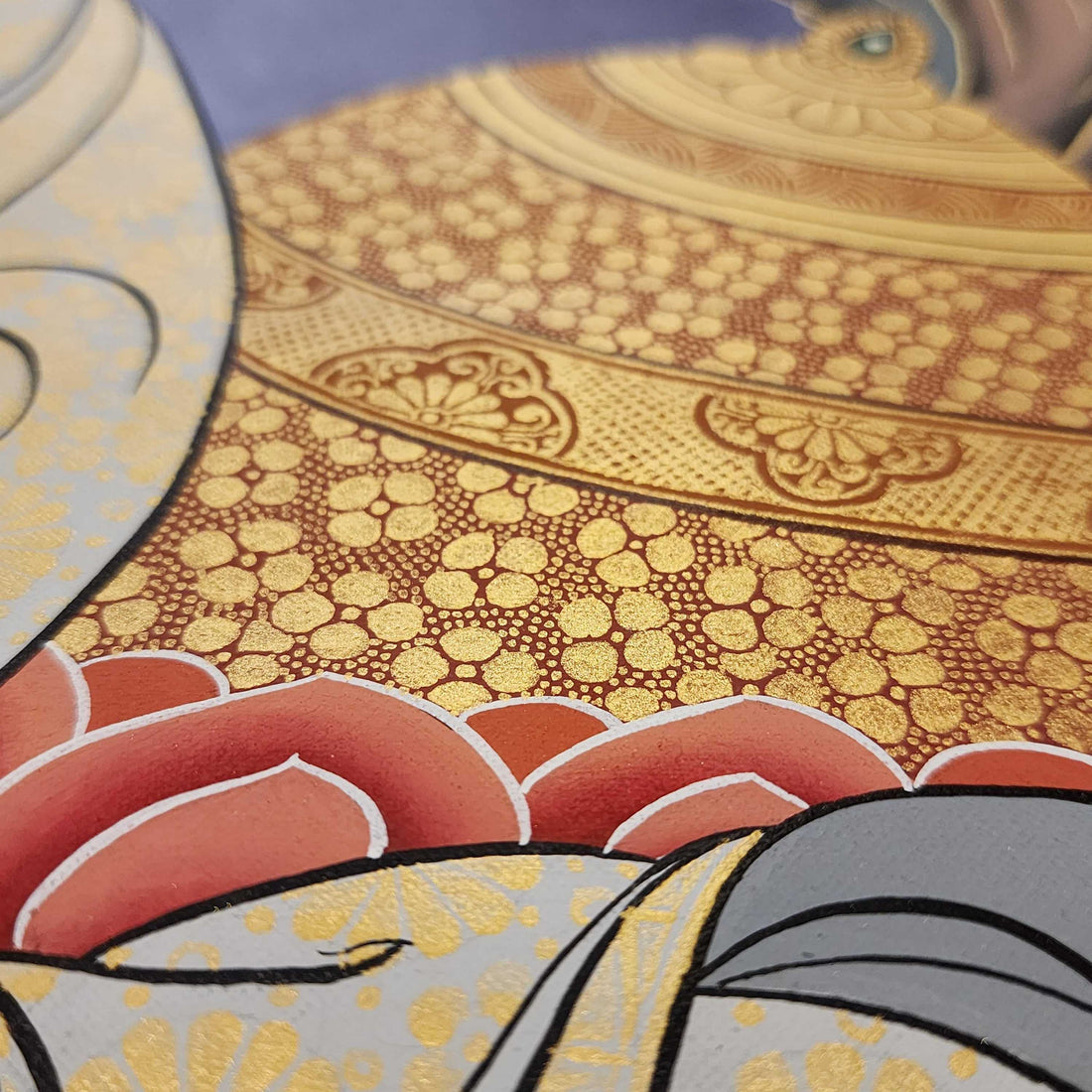
How to Identify an Authentic Tibetan Thangka Painting
Compartir
Introduction
With the growing popularity of Tibetan Thangka art worldwide, the market has seen a rise in mass-produced prints and imitations. While these may look attractive, they lack the cultural, spiritual, and artistic value of an authentic hand-painted Thangka. Knowing how to identify a genuine piece ensures you preserve tradition and invest in meaningful art.
Why Authenticity Matters
A true Thangka is not just decoration. it is a sacred object created with specific techniques, symbolism, and blessings. Fake or low-quality reproductions lose the spiritual depth and cultural heritage that make Thangkas so special.
Key Signs of an Authentic Thangka
Hand-Painted Details
-Look for visible brushstrokes, layered pigments, and subtle imperfections. Signs of human craftsmanship.
-Printed copies often have flat, uniform colors with no texture.
Natural Mineral Pigments
-Traditional Thangkas use ground minerals, gold, and natural dyes. The colors appear rich and vibrant, not overly glossy.
Sacred Proportions
-Artists follow strict guidelines for deity proportions based on ancient scriptures. Inaccurate or awkward proportions may indicate a fake.
Canvas Material
-Authentic Thangkas are painted on cotton or silk, sometimes mounted with brocade borders. Machine-made ones are often printed on synthetic fabric.
Blessing & Back Inscription
-Many genuine Thangkas have mantras or blessings written on the back by a monk or the artist.
Origin & Artisan Information
-Reputable sellers can tell you the region, artist’s name, and painting technique used.
Red Flags of Fake Thangkas
-Too-perfect, pixelated designs (indicating digital printing).
-Extremely low prices compared to market value.
-Lack of any story or background about the piece.
Why Buy from Trusted Sources
Purchasing from a trusted gallery or artisan ensures you are supporting Tibetan and Himalayan artists, preserving cultural heritage, and receiving a piece with spiritual significance.
Conclusion
An authentic Thangka is a work of devotion as much as art. By learning the key signs of authenticity, you can ensure your piece carries the blessing, beauty, and cultural heritage it was meant to hold.
